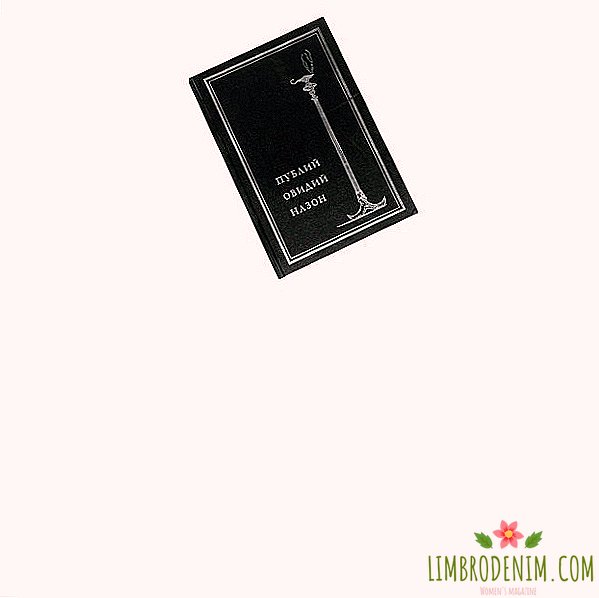Amateur gardener: 10 indoor plants that are difficult to kill
Caring for indoor plants in the past couple of years has become a fashionable hobby - we ourselves have repeatedly advised where to find inspiration for growing the home jungle. Today, the creator of the Plant Me project, Olya Merkusheva, talks about ten plants that even a novice gardener can tame. They will survive without problems in ordinary apartments and are ready to survive the horrors of a six-month winter, without giving the owner a chore.
Sansevieria
Sansevieria (in Russia it is sometimes called "mother tongue", in English-speaking countries - "snake plant"), many ignore it because they are used to seeing it in old-fashioned offices or hospitals. But it's all about the context and accessories: buy a regular terracotta pot, put it on the floor or a special stand - and the difference will become obvious.
Sansevieria has many species, the most resistant are laurenti (with a yellow stripe along the length of the leaf) and seilanika (pure green variety). Such a plant is ready to grow anytime, anywhere, but for variegated varieties more sun is needed. The more light a sansevieria receives, the brighter its color. You can almost forget about watering: the water she needs is minimal.
Beware of spider mites - sometimes on the plants from the store you can notice a whitish web between the leaves. If your pet is already infected, then you should bathe it in the shower, thoroughly clean it, treat it with insecticides and keep it separate from the rest for a couple of weeks. For preventive purposes, you can use insect spray once a month.
Monstera
Forget about the plant-related superstitions: the monster can be kept at home, it is beautiful and easy to care for. The more light you give it - the more beautiful and larger the carved leaves will be. Monstera is a tropical liana, and to get a bushy bush like from Instagram, you just need to cut the plant periodically. The main thing is to do this below the place where the air roots grow, so that the resulting cuttings can take root in the water. Do not forget to sprinkle with a cut with crushed coal - the usual activated tablets will do the job perfectly.
Epipremnum & Money Transfer
These lianas have many species for every taste, and, as usual, the more complex the color is, the more demanding the plant is for light and care. The simplest variety is “aureum”. It grows everywhere, strong and fast. It is easy to multiply: in a couple of weeks, the cut branch gives roots in the water. Other interesting options are: "Scandus Pictus" with beautiful silver spots and "Epipremnum Marble Queen" with leaves that can be almost white if the plant receives enough light.
All care comes down to two rules: not to overdry the earthy bed (but not to flood it) and give enough light to variegated varieties. Once a month you can have a shower: hang it in the bathroom and wash it with warm water.
Chlorofituma
There have always been a lot of such plants in classrooms, which, in general, is not surprising: chlorophyta is very unpretentious in maintenance. So that the plant does not evoke memories of school years, hang it under the ceiling - and forget about it. Chlorofitumens accumulate moisture in thick roots, so its excess is harmful to them. In addition to the usual spreading there are a couple of interesting varieties: curly "Bonnie" and a more compact "Ocean". The latter can be put on the desktop - they will not take up much space.
Curly Philodendrons
Almost everything is the same as that of epipremnums. Permanent residents of the shelves, mandatory when decorating cafes and public spaces. Two kinds are especially good: "philodendron skandens" and "skandens brazil". The second - with bright leaves, which means it will require more light.
Spathiphyllum
If you underestimate spathiphyllum, take a closer look at large varieties, such as sensation with huge juicy leaves. In such varieties of flowering can almost not be, but those who are smaller, will bloom a lot and often, especially if you pick a pot more tightly. Such a plant does not like when an earthen clod dries up, but even if you forgot to give it water on time, it will restore its shape within a few hours after watering. It will feel good even in a rather dark corner, because it does not tolerate direct sunlight.
Stromanta
An incredible beauty is a plant that becomes even more beautiful in the light: pink spots and burgundy reverse side of the leaf look particularly impressive in white rooms. Stromanta loves moisture: do not let the soil dry, wipe the leaves, moisten the air around. When spraying, it is better to focus on the space around the plant, rather than the leaves themselves: there may be whitish spots, which is true for all plants.
Stromant belongs to the family marandyh, which means that at night it will fold the leaves. So, it is worth choosing a place so that the plant has enough space for maneuver. Turn it once a week so that the crown develops evenly.
Ficus "elastic"
Of all the varieties of ficus "elastic" - the most resistant. It can throw off several sheets in the winter, but, quite possibly, the lateral processes in the spring will increase. The logic of care is still the same: green Robusta or dark green Abidjan will cause less hassle than, for example, Tineke, due to the characteristics of pigmentation. The ficus "elastic" loves light, moderate watering, cleaning the leaves of dust, shower and fertilizer once a month (the latter - in the season from April to October). For the most courageous: if you want your plant to start branching, then look at this video.
Palm tree
The best of the palm trees are large leaves, and the character is not as capricious as, for example, in chrysalidocarpus. Like all palm trees, the Hoveya loves light, but in the center of the room will be fine - the main thing is to avoid dark corners. Moderate watering as the top layer dries, spraying and douche, fertilizing - that’s the whole care.
Begonia "waste paper"
The most beautiful of the begonias. Spotted leaves require light, but the usual eastern window will be enough. The leaves can reach impressive size, so if you want to grow a solid begonia, be sure to cut the peduncles: flowering takes a lot of power from the plant. The soil should always be slightly damp, and the plant as a whole should be rotated once a week so that the leaves receive a uniform amount of light. They, by the way, take root easily: even from one leaf you can grow a new begonia.
Try to choose a pot with a drainage hole, in other words, a hole. If you prefer the usual pots, then plant the plant in a plastic pot, and already put it in pots. Choose a soil for the type of plant or dilute the universal with necessary additives: sand adds weight, vermiculite and moss retain moisture, perlite and small pebbles drain, coconut fiber loosens the soil.
Water for irrigation should be soft and room temperature. Suitable filtered or from the tap, stood for a couple of days. Do not overfill a plant if it suddenly drooped - perhaps it was precisely because of excess moisture. It is possible to bathe plants in warm water: be careful with a shower in dark winter, but in the heat you can increase the number of water procedures. Remember that almost all plants are afraid of drafts, especially they are dangerous in winter: an open window leaf can destroy a plant in a matter of hours, especially if it was watered before.





